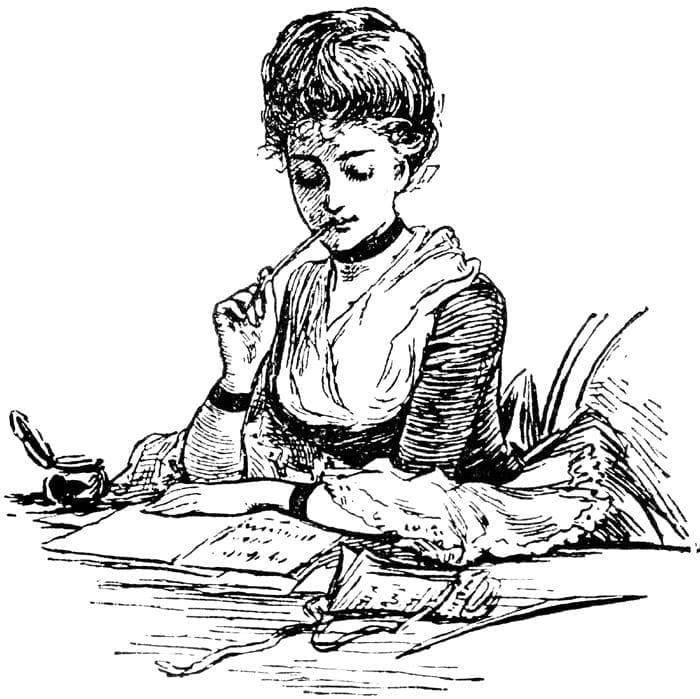Styles of Poetry
Styles of Poetry
—————————————————————-
ACROSTIC
First Letter in Lines Spell a word.
—————————————————————-
BLANK VERSE
unrhymed iambic pentameter
Terms:
Iambic refers to a metrical foot consisting of an unstressed syllable followed by a stressed syllable. (Example: “I’d love to sing a song about my cat” in which love, sing, song, bout, and cat are the stressed syllables.)
Pentameter is basically just a ten syllable line.
————————————————————————-
DIAMANTE
A Diamante is a seven-lined contrast poem set up in a diamond shape. The first line begins with a
noun/subject, and second line contains two adjectives that describe the beginning noun. The third line
contains three words ending in -ing relating to the noun/subject. The forth line contains two words that
describe the noun/subject and two that describe the closing synonym/antonym. If using an antonym for
the ending, this is where the shift should occur. In the fifth line are three more -ing words describing
the ending antonym/synonym, and the sixth are two more adjectives describing the ending
antonym/synonym. The last line ends with the first noun’s antonym or synonym.
To make it a bit simpler, here is a diagram.
Line 1: Noun or subject
Line 2: Two Adjectives describing the first noun/subect
Line 3: Three -ing words describing the first noun/subject
Line 4: Four words: two about the first noun/subject, two about the antonym/synonym
Line 5: Three -ing words about the antonym/synonym
Line 6: Two adjectives describing the antonym/synonym
Line 7: Antonym/synonym for the subject
————————————————————————-
EVOLUTIONARY FREEPROSE CONVERSATIONAL (EFC)
1 set (a set is 2 lines) of rhyme
2 sets of free write
1 set of rhyme
2 sets of free write
etc…
2 fw
1 rhyme
2 fw
1 rhyme
usually ends on rhyme
1 rhyme
1 fw
1 rhyme
1 fw
etc…
————————————————————————-
GHAZAL
A ghazal is a collection of rarely more then a dozen couplets, known as shers, averaging about seven. At the end of the second line of each sher is a repeating refrain, known as radif. The rule of matla tells that the first sher of each ghazal is a double-radif sher, where both lines repeat the refrain, and the kaafiyaa. Kaafiyaa is the rhyme scheme used before each radif throughout the poem, and doesn’t change. Each ghazal has similar beher, or meter. Beher is loosely categorized into short, medium, and long. Poets use their pen name, or maqta in the final sher.
————————————————————————-
KYRIELLE
Each line is only 8 syllables.
Minimum of 4 quatrains
rhyme scheme of azaZ bzbZ czcZ dzdZ
Z = repeating line, z is just rhyming
————————————————————————-
LIMERICK
rhymed humorous, nonsense poem of five lines.
Rhyming scheme of: a-a-b-b-a
syllable structure is: 9-9-6-6-9
————————————————————————-
MINUTE POETRY
The Minute Poem is rhyming verse form consisting of 12 lines of 60 syllables written in strict
iambic meter. The poem is formatted into 3 stanzas of 8,4,4,4; 8,4,4,4; 8,4,4,4 syllables.
The rhyme scheme is as follows: aabb, ccdd, eeff
————————————————————————-
MIRRORED REFRAIN
The rhyme scheme is as follows: xaBA, xbAB, xaBA, xbAB, etc..
x represents the only lines that do not rhyme within the poem. A and B represent the refrain (repeating)
————————————————————————–
MONOTETRA
The monotetra is a new poetic form developed by Michael Walker. Each stanza contains four lines
in monorhyme. Each line is in tetrameter (four metrical feet) for a total of eight syllables. What makes
the monotetra so powerful as a poetic form, is that the last line contains two metrical feet, repeated.
It can have as few as one or two stanzas, or as many as desired.
Stanza Structure:
Line 1: 8 syllables; A1
Line 2: 8 syllables; A2
Line 3: 8 syllables; A3
Line 4: 4 syllables, repeated; A4, A4
————————————————————————-
NONET
rhyming is optional.
line 1 – 9 syllables
line 2 – 8 syllables
line 3 – 7 syllables
line 4 – 6 syllables
line 5 – 5 syllables
line 6 – 4 syllables
line 7 – 3 syllables
line 8 – 2 syllables
line 9 – 1 syllable
————————————————————————–
PANTOUM:
LINE 1 A
LINE 2 B
LINE 3 A
LINE 4 B
LINE 5 (repeat of line 2) B
LINE 6 C
LINE 7 (repeat of line 4) B
LINE 8 C
LINE 9 ( Repeat of line 6) C
LINE 10 D
LINE 11 (Repeat of line 8 ) C
LINE 12 D
Last Stanza
LINE 13 (repeat of line 2 in previous Stanza)
LINE 14 (repeat of line 3 in First Stanza)
LINE 15 (repeat of line 4 in previous Stanza)
Line 16 (repeat of line 1 in first Stanza)
————————————————————————
PARADELLE
A paradelle is a difficult French poetic form first used in the eleventh century. This fixed form of
poetry consists of four six-line stanzas with a repetitive pattern.
First Three Stanzas:
The first two lines as well as the third and fourth lines of the first three stanzas must be the same
(repeat). Where it begins to get difficult and become more of a poetic puzzle is when reaching
fifth and sixth lines. These lines must contain all the words from the preceding four lines within
the stanza using them only once to form completely new lines.
Last Stanza:
For the most difficult piece of this poetic puzzle, the final stanza of the paradelle does not repeat like
the preceding stanzas, rather the final six lines must contain every word from the first three stanzas,
and only those words, again using them only once to form completely new lines.
The Design is simple:
Stanza 1: 1, 1, 2, 2, 3, 4
Stanza 2: 5, 5, 6, 6, 7, 8
Stanza 3: 9, 9, 10, 10, 11, 12
Stanza 4: 13, 14, 15, 16, 17, 18
————————————————————————-
QUATRAIN
A Quatrain is a poem consisting of four lines of verse with a specific rhyming scheme.
A few examples of a quatrain rhyming scheme are as follows:
#1) abab
#2) abba — envelope rhyme
#3) aabb
#4) aaba, bbcb, ccdc, dddd — chain rhyme
————————————————————————-
RHYME ROYAL
a stanza form having seven lines of iambic pentameter
ababbcc
————————————————————————–
SEPTOLET
seven lines
fourteen words
break in between the two parts
Both parts deal with the same thought and create a picture.
————————————————————————–
SESTINA
First stanza, ..1 ..2 ..3 ..4 ..5 ..6
Second stanza, ..6 ..1 ..5 .. 2 ..4 ..3
Third stanza, ..3 ..6 ..4 ..1 ..2 ..5
Fourth stanza, ..5 ..3 ..2 ..6 ..1 ..4
Fifth stanza, ..4 ..5 ..1 ..3 ..6 ..2
Sixth stanza, ..2 ..4 ..6 ..5 ..3 ..1
Concluding tercet:
middle of first line ..2, end of first line ..5
middle of second line ..4, end of second line..3
middle if third line ..6, end of third line ..1
————————————————————————-
SONNET
14 lines (iambic pentameter)
A Shakespearean (English) sonnet has three quatrains and a couplet, and rhymes abab cdcd efef gg. 10 syllables per line
An Italian sonnet is composed of an octave, rhyming abbaabba, and a sestet, rhyming cdecde or cdcdcd 10 or 11 syllables per line
French sonnets same as Italian, but normally have 12 syllables per line.
————————————————————————-
TANKA
5 lines
made up of 5/7/5/7/7 syllables,
totaling in 31 onji.
written in two parts,
the first three lines are one part,
and the final two another,
Disconnected, but still a necessary part of the whole
————————————————————————-
TERZA RIMA
iambic pentameter
ABA BCB CDC DED EFE FGF GHG H
Terza Rima Sonnet: aba, bcb, cdc, ded, ee
Terms:
Iambic refers to a metrical foot consisting of an unstressed syllable followed by a stressed syllable. (Example: “I’d love to sing a song about my cat” in which love, sing, song, bout, and cat are the stressed syllables.)
Pentameter is basically just a ten syllable line.
————————————————————————-
TRIOLET
1 A
2 B
3 a
4 A
5 a
6 b
7 A
8 B
Line 1 and 2 are any non-rhyming lines
Line 1 becomes line 4 and 7. Line 2 becomes line 8.
a and b are rhyming
Expanded
ABaA abAB CDcC cdCD EFeE efEF
or
ABaA abAB ABaA abAB ABaA abAB
————————————————————————-
TYBURN
A six line poem consisting of 2, 2, 2, 2, 9, 9 syllables.
The first four lines rhyme and are all descriptive words. The last two lines rhyme and incorporate
the first, second, third, and fourth lines as the 5th through 8th syllables.
————————————————————————
VILLANELLE
A-b-A1
a-b-A
a-b-A1
a-b-A
a-b-A1
a-b-A-A1
A and A1 are lines that are repeated or refrain lines.
The meter on a villanelle can be anything you choose, but must be regular.
————————————————————————

Contact Lady Kathleen
Please use the form below to contact me about Poetry
